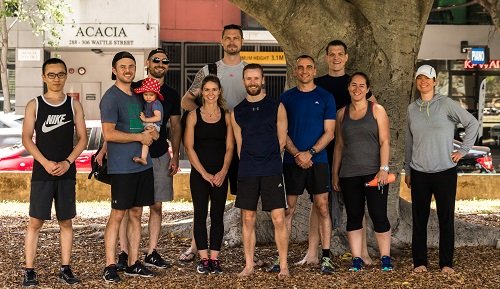When I first began coaching calisthenics over a decade ago, it was a rare sight to see someone executing advanced moves like a muscle-up. I remember there was one guy in the park, Alex, who could do a muscle-up, and we all thought he was a god.
Fast forward to today, and it’s not unusual to see someone nailing a muscle-up almost every day. The growth of calisthenics has been incredible, but it has also brought a unique set of challenges and rewards for those of us who coach this dynamic sport.

Calisthenics: A Growing Movement
Calisthenics has grown from a niche activity to a global fitness movement. Its appeal lies in its simplicity — using just your body weight to build strength, flexibility, and control. You don’t need fancy equipment or an expensive gym membership. All you need is your body and a place to train. This accessibility has drawn people from all walks of life, and as a coach, I’ve seen how this diversity brings both challenges and excitement.
Coaching calisthenics isn’t just about teaching exercises; it’s about understanding each person’s unique strengths and limitations. It’s about crafting personalised progressions that ensure safety while pushing students towards their goals. This growth has made calisthenics coaching more rewarding, but also more demanding.
The Early Days: Learning Through Experimentation
In the early days, our learning resources were limited. There was no Instagram, but YouTube was a goldmine with a few dedicated channels showing basic moves and progressions. I spent countless hours reading books, watching videos, and experimenting with different methods. It was all trial and error, figuring out what worked and what didn’t. Each new student presented a unique challenge, bringing new variables to consider, new limitations to work around, and new progressions to create.
Coaching was about constant adaptation. If one progression didn’t work, we tried another. If someone hit a plateau, we reassessed their technique, mobility, or mindset. This hands-on, experimental approach was challenging, but it was also one of the most valuable learning experiences.

Progression is Key
In calisthenics, progression is everything. To help students reach new heights, you must continually adjust and refine exercises to make them more challenging. Over the years, I’ve developed countless progressions, both from established methods and my own experimentation. The beauty of calisthenics is that if you can imagine an exercise, you can create progressions to get there.
But it always comes back to the fundamentals — the basics like push-ups, pull-ups, and squats. Mastery of these foundational movements is what I constantly emphasise to my students. Without a strong base, it’s impossible to safely progress to more advanced skills.
- Focus on fundamentals: Build a strong foundation with core calisthenics movements.
- Create varied progressions: Tailor each progression to match the individual’s abilities.
- Encourage patience: Remind students that mastery takes time and consistent effort.

The Rewards: Watching Transformation
The most rewarding aspect of coaching calisthenics is witnessing transformation. There’s nothing quite like seeing a student achieve a skill they once thought impossible, whether it’s their first pull-up or a perfect handstand. These milestones represent not just physical strength, but mental resilience and determination.
Each person’s journey is unique, and every achievement, no matter how small, is worth celebrating. I’ve seen students develop confidence, overcome self-doubt, and realise they’re capable of more than they ever imagined. It’s moments like these that remind me why I love coaching.

The Journey Continues
After more than ten years of coaching, I’m still learning every day. Calisthenics is a journey of constant growth — not just for the students, but for the coach as well. The challenges keep me engaged, and the rewards keep me passionate about what I do.
If you’re thinking about taking up calisthenics, or even coaching it, embrace the process. It’s not just about building muscle or mastering moves; it’s about discovering what your body can do and finding joy in movement. And that, for me, is the greatest reward of all.


